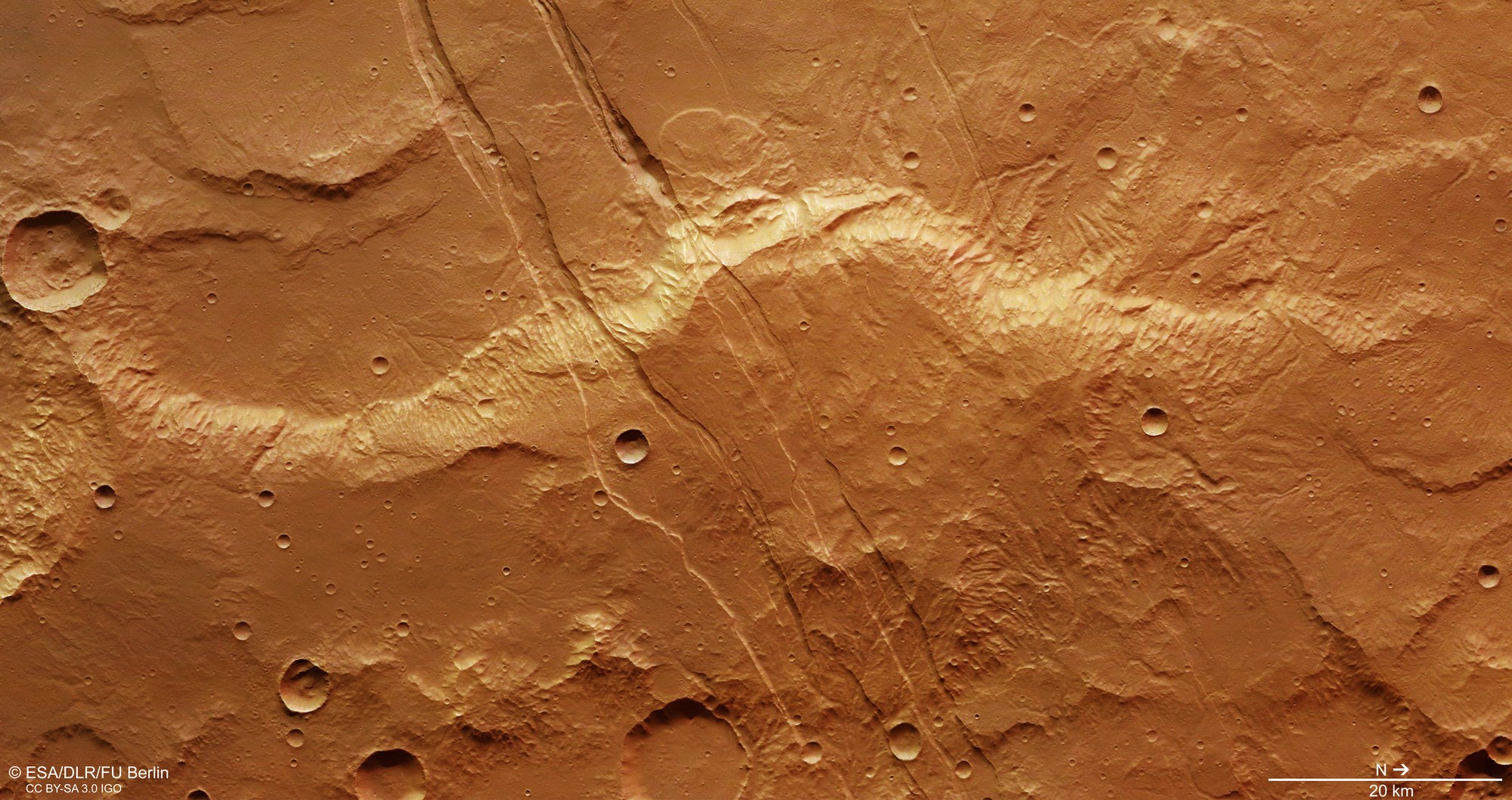Vertical plan view of grabens in Sirenum Fossae
Vertical plan view of grabens in Sirenum Fossae
The more or less parallel fault lines in Sirenum Fossae clearly show the direction in which tensions in the Martian crust run – geophysicists refer to this as ‘tectonic stress’. North is to the right, and the grabens run from northeast to southwest. The forces that stretched the crust, ultimately resulting in its fracturing, ran perpendicular to this – that is, in a south-easterly to north-westerly direction. In this process, the existing three- to four-billion-year-old plateau was 'dissected' in a straight line. The image also shows the result of more recent geological processes. For example, asteroid impacts have left craters with barely weathered rims; huge landslides have occurred along the 2000-metre-high ridge in the upper third of the image, forming tongue-shaped deposits; and small gullies may possibly be the result of erosion by water running down the slopes.

